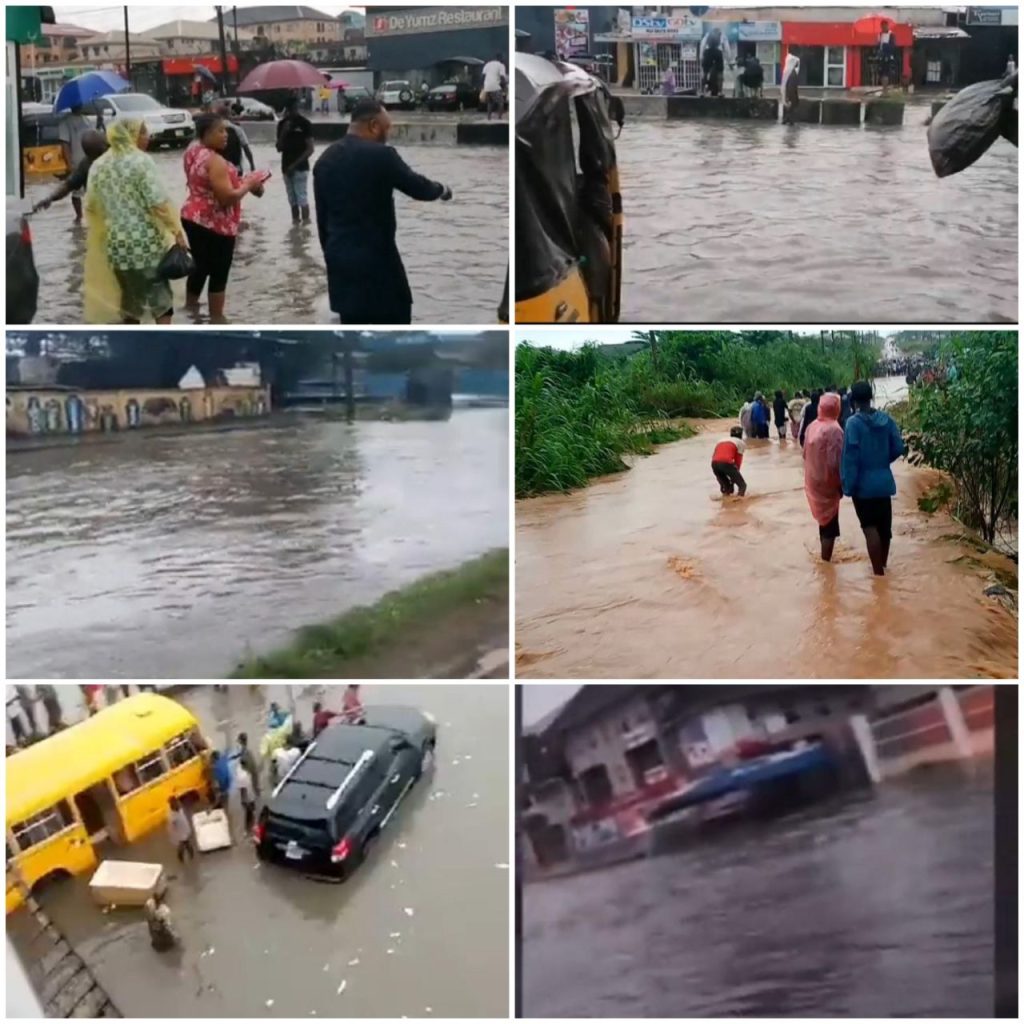
In a recent announcement, the Minister of Water Resources and Sanitation, Prof. Joseph Utsev, alerted that 148 local government areas in 31 states are at a high risk of severe floods in 2024.
Utsev delivered this warning during the official presentation of the 2024 Annual Flood Outlook in Abuja on Monday.
This year’s AFO is focused on the theme “Promoting the Use of Data Analytics and Modeling for Flood Risk Assessments and Food Security.”
According to the reports by the News Agency of Nigeria on Tuesday, the Nigeria Hydrological Services Agency (NIHSA) leads the annual AFO predictions.
The states identified as high-risk areas include Adamawa, Akwa-Ibom, Anambra, Bauchi, Bayelsa, Benue, Borno, Cross-River, Delta, Ebonyi, Edo, Imo, Jigawa, Kaduna, Kano, Katsina, Kebbi, and Kogi.
Other states on the list are Kwara, Lagos, Nasarawa, Niger, Ogun, Ondo, Osun, Oyo, Plateau, Rivers, Sokoto, Taraba, and Yobe.
Utsev stressed the importance of taking proactive measures to reduce potential flood impacts in these regions.
He emphasized the necessity of preparedness, early warning systems, and community engagement to lessen the damage to lives and property.
The minister mentioned that the period of high flood risk stretches from April to November 2024, with possible effects on population, agriculture, livelihoods, livestock, infrastructure, and the environment.
He highlighted how the theme aligns with the Presidential Agenda on Food Security, which is crucial to the current administration’s aim of lifting millions of Nigerians out of poverty and advancing national prosperity.
Utsev referenced the recurring severe flood disasters experienced by Nigeria in recent years, pinpointing 2012 as one of the most devastating events on record.
He described the 2022 floods as particularly catastrophic, being labeled the worst in the country’s history in terms of impact magnitude.
The World Bank estimated the total economic damage from the 2022 floods, including damage to residential and nonresidential buildings, infrastructure, productive sectors, and farmlands, at approximately 6.68 billion dollars.
In response to the continued challenges posed by flooding, President Bola Tinubu launched the National Economic Council Ad-hoc Committee on Flood Mitigation, Adaptation, Preparedness, and Response,” he stated.
Utsev outlined the committee’s responsibility to proactively develop a comprehensive roadmap aimed at enhancing Nigeria’s flood mitigation, preparedness, adaptation, and communication infrastructure.
Earlier, Prof. Charles Anosike, Director General of the Nigerian Meteorological Agency, highlighted the significance of the partnership between NIHSA and his agency in improving the nation’s disaster preparedness.
He emphasized how the collaboration has significantly enhanced efforts to mitigate the impact of flooding through early warning systems.
This collaboration is a crucial initiative focusing on addressing the escalating frequency and severity of flooding incidents nationwide.
He stressed the importance of leveraging data, analytics, and modeling in flood risk assessment and management, underscoring NIMET’s commitment to providing comprehensive meteorological insights for effective decision-making.
Referring to a UNICEF report on the extensive damage caused by flooding to agricultural lands in the previous year, he emphasized the urgency of incorporating forecast information into national policies and interventions.
He reaffirmed NIMET’s dedication to collaborating with NIHSA and other stakeholders to deliver timely and accurate weather forecasts tailored to meet the diverse needs of communities nationwide.
The Director General of the National Emergency Management Agency, Zubaida Umar, highlighted the significance of the AFO released by NIHSA.
Umar acknowledged the increasing incidence of flooding in Nigeria and its devastating consequences, including loss of lives, property damage, displacement, and disruption of livelihoods.
She emphasized the urgent need for proactive measures to reduce the impact of flooding across the nation.
Umar praised the AFO as a crucial tool for informed decision-making and action to enhance the nation’s preparedness for floods, citing the longstanding partnership between NEMA and NIHSA in flood risk management.
She noted that NEMA relies on the AFO to develop its annual Climate Related Hazard preparedness and response strategy, which serves as an early warning message for Nigeria.
Clement Nze, NIHSA Director-General, stressed the importance of promoting a better understanding of flood risks and implementing appropriate mitigation measures to tackle the challenges of flooding in Nigeria.
He highlighted the essential role of fostering collaboration among disaster risk managers, earth observers, mission makers, and other stakeholders to enhance preparedness and flood control measures.
Nze emphasized that collaborative efforts are crucial in effectively managing flood risks and reducing the impact of flooding on communities and infrastructure nationwide.
NAN
